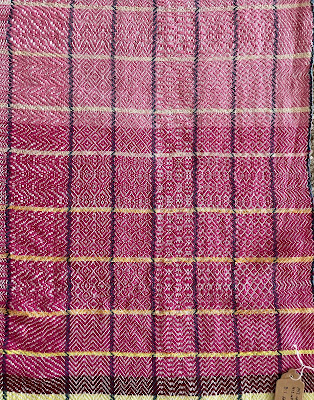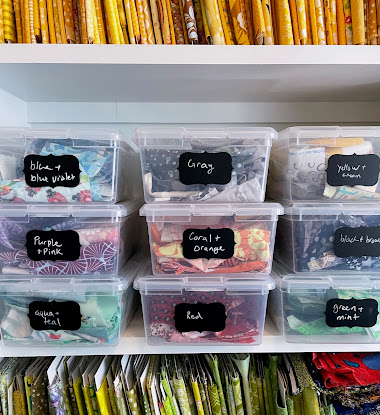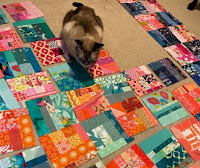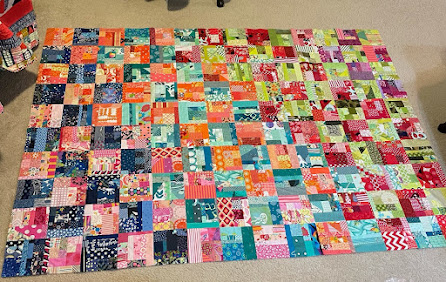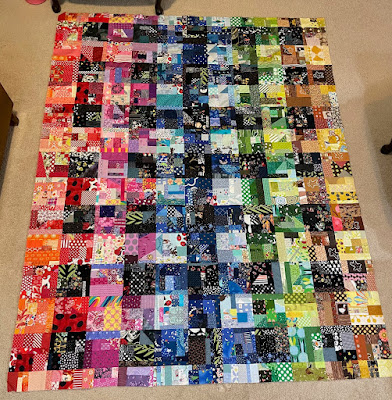I have been a member of the Jane Stafford Textiles School of Weaving for a few years now, but I'm not someone who tends to do every lesson in order or in a timely manner. Because of this I have started to slim down the requirements for myself, and in some cases just make a short sampler instead of the finished project as samplers. This makes sense to me in the color theory projects, but not so much in the lace and block work projects, where I personally don't want a sent of placemats that look wildly different. Or, in the case of the overshot project, 5 scarves.
Everyone has already been given a scarf I've made, or several, so making five more, using silk as the pattern weft to boot, seemed outlandish, so, I decided to make 4x6" samples for my sample book instead.
The warp is 8/2 cotton, but after doing two samples with the 30/2 silk as the tabby weft and one strand of 18/2 zephyr as the pattern weft, I had so much trouble keeping my beat consistent that I quickly switched to 8/2 cotton for the tabby weft and 2 strands of zephyr for the pattern weft. This does make the hand too hard for a scarf, but was much easier to weave.
After I did the five patterns she set out, I rethreaded the warp to try out a namedraft overshot threading that I had designed in an MLH class: (the name I used is "Blotch And Thrum")
Still using an 8/2 cotton tabby weft and the doubled zephyr pattern weft, just treadling differently. I did note, in finishing these, that the pink does not shrink up as cleanly as the other colors.
After those samples, I tried a few other treadlings on the warp, maybe eight other ideas, and here are two that are somewhat related to overshot.
1. Summer and Winter: (pattern weft is 5/2 cotton)
2. Taquette: (weft is 5/2 cotton in two colors)
I think that this was a very successful use of the class. But while I also did a small sample for one of the lace classes, I'm still prone to succumb to the temptation to do as I'm told and put on a long warp and make a lot of placemats.










